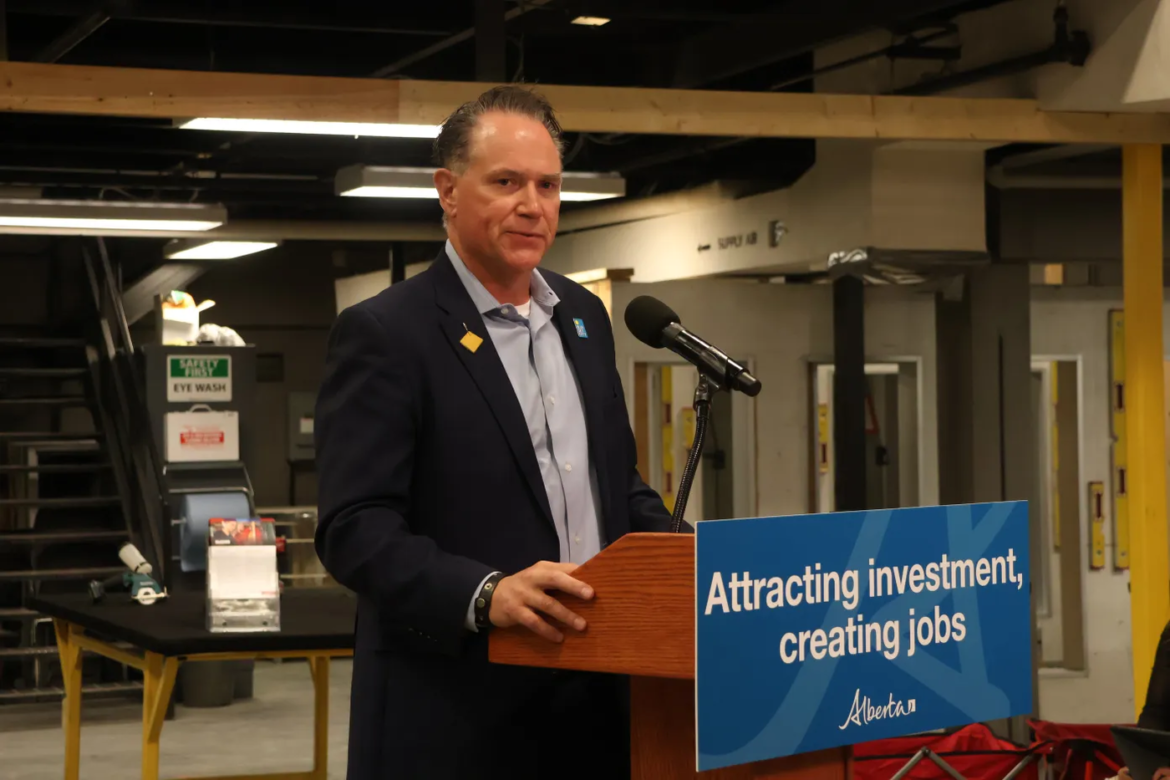By Kaiden Brayshaw | LiveWire Calgary
Nearly 50 government programs and initiatives come together to form the new Alberta Jobs Strategy set to invest $26 billion over the next three years.
With Alberta’s population growing faster than any other province and expected to reach 5.5 million by 2030, the new plan will add to existing business-friendly policies like reducing red tape, support for labour mobility and the removal of interprovincial trade barriers.
The strategy, made in partnership with The Alberta Chambers of Commerce and Calgary Economic Development, is set to make smart investments to build a resilient, inclusive workforce, helping Alberta’s economic growth and competitiveness, according to a government-issued press release.
“The strategy is built with four key pillars: career awareness, career readiness, removing barriers, and employer focus,” the release reads.
In a press conference, Joseph Schow, Minister of Jobs, Economy, Trade and Immigration, said that the Alberta Jobs Strategy will connect employers with job seekers, improve skills training, help Albertans advance their careers, and enable the matching of workers with available jobs.
“This includes supporting youth and adults to be successful, whether entering, re-entering or transitioning with the workforce, and enhancing access to relevant training, labour market, information and employment opportunities,” he said.
Alberta’s historic leadership in fields like agriculture and energy will only continue if we take action to sustain our growth as a province, according to Schow.
Though many details of the strategy, like number of jobs created or the number of people trained, remain up in the air, Schow said more information will be shared in future announcements.
Brad Parry, president and CEO of Calgary Economic Development, said that opportunity does not happen by accident; instead, it’s built through smart investments in people, partnerships and programs.
“The Alberta Job Strategy is exactly that kind of investment, it’s a strong commitment to building a workforce that’s skilled, inclusive and ready for the demands of a changing economy,” he said.
“Investors want confidence that we have the workforce they need (and) they want to be globally competitive, but not just for today, but for decades to come. The good news is our answer is yes.”
Shauna Feth, president and CEO, Alberta Chambers of Commerce, said in the conference that the job strategy will meet hiring and job-finding challenges.
“Too many Albertans remain unemployed or underemployed, including young people, newcomers, Indigenous people and others facing barriers. Our province’s prosperity depends on connecting Albertans with clear pathways into jobs and careers which will give businesses access to the talent they need to compete, expand and thrive,” she said.
“The Job strategy meets these challenges head on through its four pillars of building career awareness, strengthening readiness, reducing barriers and ensuring employer-driven alignment. This practical, forward-looking approach supports informed career choices and curriculum design.”





